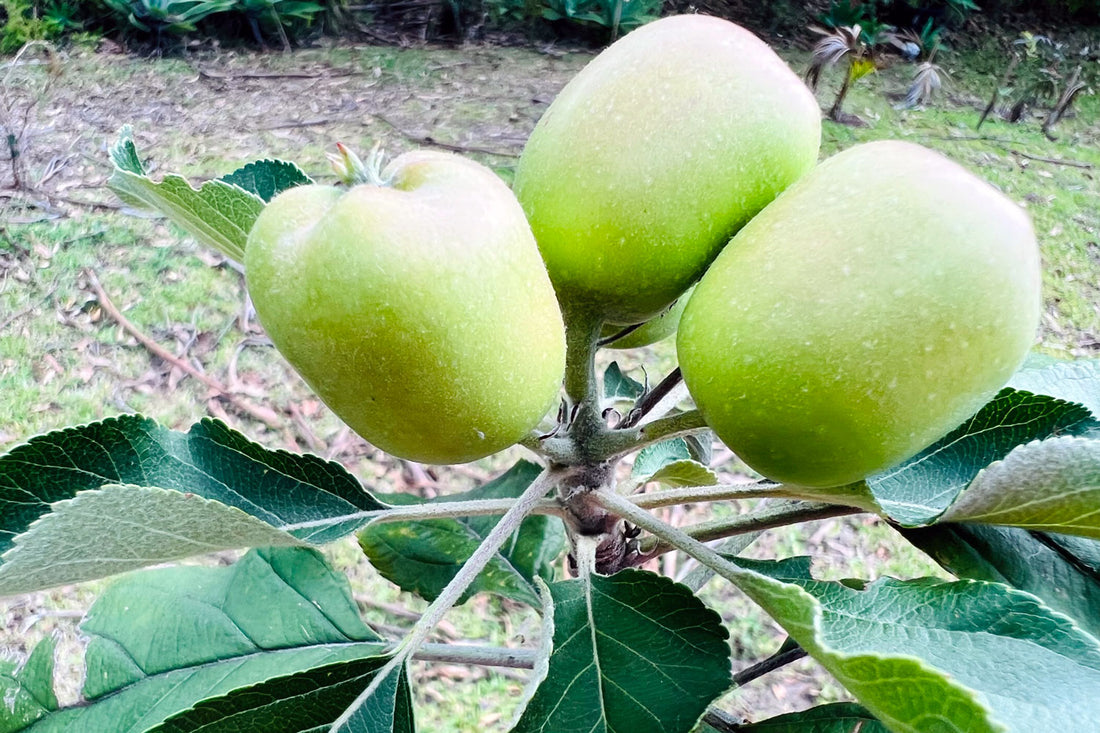Growing fruit trees doesn’t have to be expensive – or difficult. With this guide, you’ll be able to grow apple trees straight from seeds of supermarket-sold fruits.
The best part? You’ll do it using old coffee pods, so it’s zero-cost and zero-waste.
Step 1: Collect Your Seeds
To grow your own apple tree, you don’t need to buy expensive seeds from professional growers. Collecting the seeds inside an apple from Woolworths or Coles can work too.
Make sure your seeds are undamaged and whole. If they’ve already started to sprout (that is, there’s something growing out of them), take care not to damage the new growth – that’s the start of a future apple tree.
Step 2: Sprout Your Seeds
Before you plant your apple seeds in any sort of soil, you’ll need to let them sprout.
Line the bottom of a cylindrical glass container with damp paper towel; try to cover the bottom of the container with two to three layers of towel. Place your newly harvested seeds into the container and leave the lid off.
Position your container of seeds somewhere inside your home that gets morning sunlight (an east-facing kitchen bench is ideal). Make sure the temperature and humidity level inside your home are both normal – your seeds may not sprout in extreme conditions.
If everyone goes well, your seeds will sprout in one to two weeks.
Step 3: Plant Your Seeds
As your seeds are waiting to sprout, start collecting used double espresso pods from a coffee capsule machine like a Nespresso. While you can use smaller pods, double espresso pods work best because of their shape and size. Each seed will have its own pod, so collect as many as you need.

Once your seeds have sprouted, use a metal skewer to poke six holes in the bottom of each pod (that is, the semi-spherical side). Make sure the skewer is small; you don’t want the used coffee grounds in the pod to fall out. You should now have pods that have one large hole and over a dozen small holes on the flat side and six small holes on the spherical side.
Use scissors or a knife to ‘join’ up the small holes on the flat side so that you can remove most of the aluminium on the flat side. You should now be able to drop your seeds into the pods, then place each pod on top of a small container filled with water. (Use the lip that runs around the outside of your pod to suspend it.) The idea is to have the bottom of the pod slightly below the water level so that your seed has an available water source without the coffee grounds becoming fully saturated.

There’s a lot of debate online about whether coffee grounds are bad for your plants. We’re not scientists, but, without running a test against a placebo, there’s no noticeable impact on apple seed growth when coffee grounds are used as a substrate. We’ve grown multiple batches of trees using this exact method (maybe because apple trees prefer slightly acidic soils).
Step 4: Nurture and Transplant Your Seeds
Your seeds should take around two weeks to become large enough for transplanting into soil. A seedling height of 2.5–4 centimetres is ideal. While they’re growing, make sure you change their water once a week.

When your seedlings are ready, find a full-sun spot with deep, well-drained soil. Apple trees don’t grow well in wet soil and may be at risk of rot. Dig a hole that’s around 30 centimetres deep and 15 centimetres wide, and plant one of your seedlings. (You can add organic fertiliser or compost to the soil to improve its structure.)
Repeat the process for your remaining seedlings, mulch them (sugar cane mulch is great), then water them in. If you plant your seedlings over summer, think about protecting them from sunburn with medium-density shade cloth.

Next Steps
That’s it – you’ve successfully grown apple trees from apple seeds for a grand total of $0. Depending on your climate, time of year, tree type, and soil, you should see fruit in around five to eight years, so plant with the future in mind.

It’s worth noting that apple trees grown from seed may not necessarily produce high-quality fruit. Because most apples in stores are hybrid varieties (known as ‘F1 hybrids’), their genes aren’t stable, which means the apples you get from a second-generation seed might not have the same traits as apples from an F1 hybrid. Commercially produced apples are grown using grafting, which means saplings are genetically the same as their parent plant.
As such, it’s quite normal to get fruit that is deformed, sour, or floury – don’t be disappointed. Growing plants is an art, not a science, and that touch of uncertainty makes it all the more rewarding when you do get a perfect, high-yield tree.

